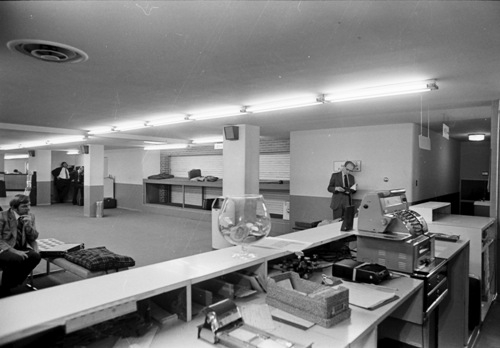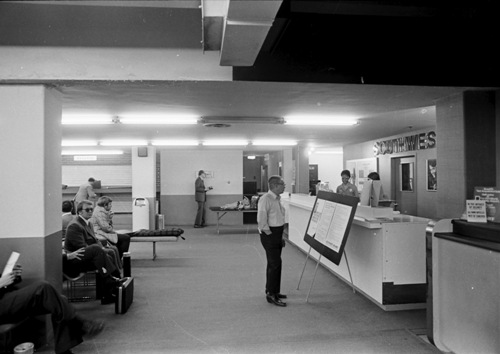- Subscribe to RSS Feed
- Mark as New
- Mark as Read
- Bookmark
- Subscribe
- Printer Friendly Page
- Report Inappropriate Content
Twice before, I have led myself astray when I thought I had uncovered photos from Houston Hobby in the early 1970s. Compared to Dallas or San Antonio, our archives have little to reflect our early operations at Hobby. Well, those days are over, and I uncovered these amazing photos. Having actually flown into the airport when it was Houston International, I knew the scope of the building’s facilities. These photos don’t look like anything such a busy airport would have offered. Dan Johnson in Dispatch, and who was a very early Operations Agent at Hobby, helped set me straight, and in the process we discovered something even more historically significant: The photos were taken during a pivotal point in Southwest's history when the survival of the Company was in real danger. Upon looking at the photos, Dan e-mailed me: “That is most definitely Hobby. When we reopened airline service at the older airport in late 1971, Southwest was located in the old international building attached to the main terminal. In fact, it was (it’s gone now) just before the road/ramp went up to the main building. We did not have jetbridges, and all boarding.was at ramp level." The photo above looks like the baggage claim at a small-town airport instead of one of the nation’s biggest cities. Ramp Agents just rolled up the door and set the bags inside the terminal. The photo above shows a few bags left unclaimed. The ticket counter is straight ahead, and the outbound waiting area for the gate are the seats to the right. If you look carefully, you can see the edge of the Braniff ticket counter next to ours.

Above, this photo offers a view of the waiting area from behind the ticket counter. The Braniff ticket counter is just behind the wall beyond our two Employees, and both airlines shared the waiting area. Dan is able to identify the Employee on the right as Ollie Ross.

Looking back the other direction, we see a man patiently waiting for his boarding announcement. The gate doorways are directly in front of him. Dan remembers the building’s less than ideal ergonomics: “So imagine if you will, those low ceilings, the inbound Passengers mixing with the outbound, trying to get their luggage while the outbounders were trying to get through that small opening that led to the ramp. It was the most crowded mess and loud stressful wild and wooly time you can imagine.” Note how the cash register that dispensed the tickets (as receipts) dominates the counter.

If the age of the photos wasn’t special enough, take a look at the one above. Two items date the scene to a very critical point in Southwest’s history. The poster to the extreme right on Braniif's counter announces a “Get Acquainted Fare.” Braniff had cut our fare between Houston and Dallas in half, and while neither airline could make a profit on that low a fare, Braniff had “deeper pockets” and could wait us out to either take all of our Customers at that fare or for us to go broke matching their fare. Our response is on the big easel in front of the Southwest counter. It includes the famous advertisement where our President, Lamar Muse, proclaims that “Nobody’s going to shoot us out of the sky for a lousy $13.” Southwest gave our Customers a choice, they could pay the $13 fare, but if they paid the full fare of $25, we would give then a fifth of premium liquor. Since most of our Customers were on expense travel, they paid the full fare, put it on the expense report, and took the bottle home. During this summer of 1973, we became the largest distributor of Chivas, Crown Royal, and Smirnoff in Texas.
When he spoke about Montgomery's victory over Rommel at El Alamein, Winston Churchill said: "Now this is not the end. It is not even the beginning of the end. but it is, perhaps, the end of the beginning." The same was true going forward for Southwest. Crisis and battles loomed all over Texas and beyond, but the $13 Fare War established Southwest as the underdog in many folks’ minds. The airline had turned the corner, and 1973 became the first of 38 consecutive years of annual profitability.
You must be a registered user to add a comment. If you've already registered, sign in. Otherwise, register and sign in.